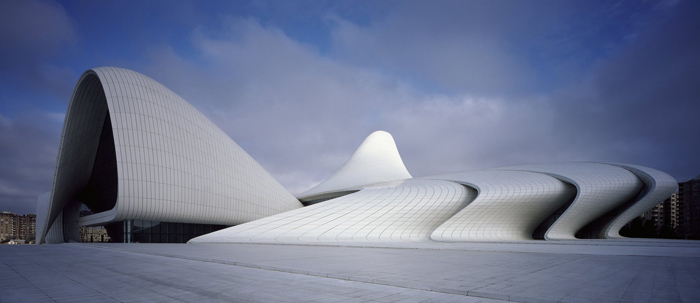
The design of the Heydar Aliyev Cultural Center establishes a fluid relationship between the outer plaza area and the interior of the building. The topography of the square rises slowly in a fluid way, forming undulations and folds that finally create the space of the Cultural Center.
zahra hadid

One of the most notable points of the project and that has been a challenge in the project has been the skin of the building. A continuous and homogeneous surface had to be achieved, which required the use of advanced control and communication systems among those involved in the project

The structure of the Heydar Aliyev Cultural Center combines a concrete structure with a spatial structure to achieve large spaces without the need for exposed pillars that interrupt the large spaces. This structure is placed in the envelope and in the curtain wall.

The seams between panels give an idea of the scale of the project and reinforce the idea of its fluid geometry. The use of these panels provides a solution to the technical aspects of the work such as handling and transport and to technical issues such as expansions, response to the earthquake... To mark the relationship between interior and exterior, the lighting in the center plays an important role. The lighting allows a different reading of the building during the day and at night. During the day the building produces reflections of light that are modified throughout the hours of the day, the reflective glass does not allow a clear view of its interior. During the night the building is transformed and the interior lighting of the building is shown, clearly showing all its interior and maintaining the interior and exterior fluidity.

